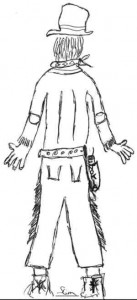Brief by Allen Best
Health – September 2005 – Colorado Central Magazine
You know you should never, never drink water from streams in the backcountry. For 30 years we’ve heard warnings that you can get Giardia lamblia cysts and other microscopic miscreants that can cause diarrhea and other great unpleasantness.
But if you absolutely must drink water in the backcountry, drink from fast-moving streams, but never, ever from lakes. And, of course, always take a high-priced water filter.
That’s what we’ve been told. But the Los Angeles Times reports that evidence for those claims is skimpy. In fact, researchers from the University of Cincinnati found that giardiasis caused by consumption of high mountain water is an “an extraordinarily rare event,” one comparable to the threat of shark attacks against beach-goers.
A 1995 survey of 48 of the 50 state health departments found that only two of the agencies considered giardia cysts a problem for backpackers, and even then, they had no data to support this concern.
Another study was done in 1993 in the Desolation Wilderness, located west of Lake Tahoe in California. That study found that of the 41 backpackers studied, 6 were stricken with cramping diarrhea, nausea and bloating. Yet lab tests revealed that none of them were infected with giardia. Instead, E. coli, salmonella or other culprits were suspected.
Poor personal hygiene, not contaminated water, may explain the frequent complaints of those returning from the backcountry, say wilderness managers. When going to the wilderness, hikers or backpackers are less punctual about cleanliness after going to the bathroom. Afterward, they may share food along with fecal matter, which can be transmitted from the surfaces of eating utensils and even camping gear.
“We are so dependent on convenient sanitation that when people go into the wilderness, they fall apart, and their habits drop to Third World standards,” according to Dr. Howard Backer, a water purification expert and a past president of the Wilderness Medical Society.
A 20-year study underway in the Sierra Nevada aims to further document the quality of wilderness water. Bob Derlet, an emergency room physician and medical professor, hikes about 2,000 miles each summer, stopping at 100 sites to collect samples of water that are then tested for the presence of microscopic miscreants.
Based on his findings so far, he bothers to treat only that water located below sheep and cattle pastures, and in slow-moving and warm streams immediately downstream from heavily used campsites, Otherwise, most of the water is clean enough to drink, he says.
Lake water is better than stream water, he says. “The top few inches of lake water are zapped with ultraviolet rays from the sun, which are a powerful disinfectant.”
Such views remain controversial, however, with most doctors concurring that it’s always best to be cautious, since you can’t see, taste or smell microscopic contaminants.


